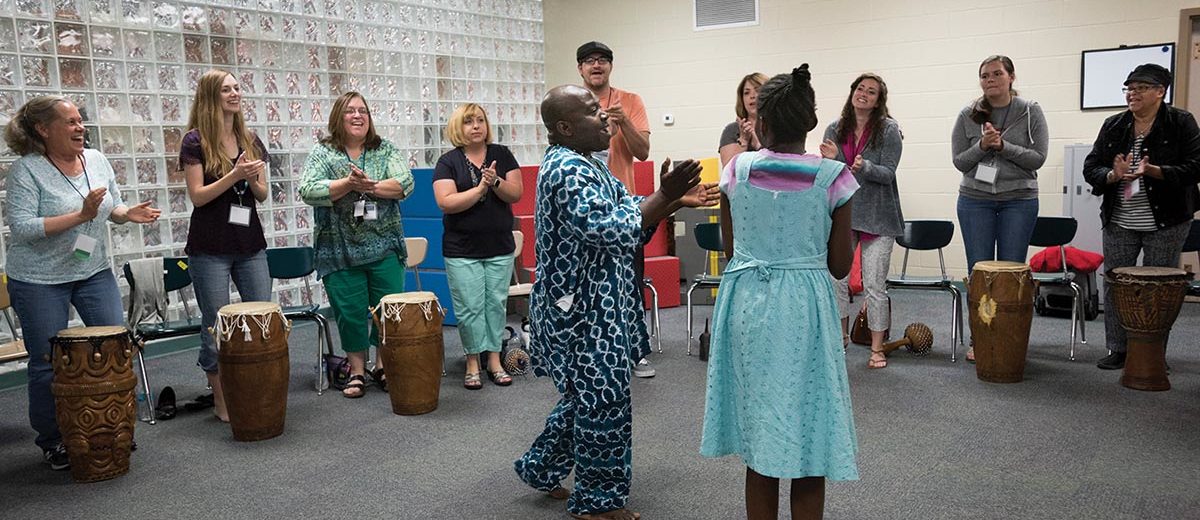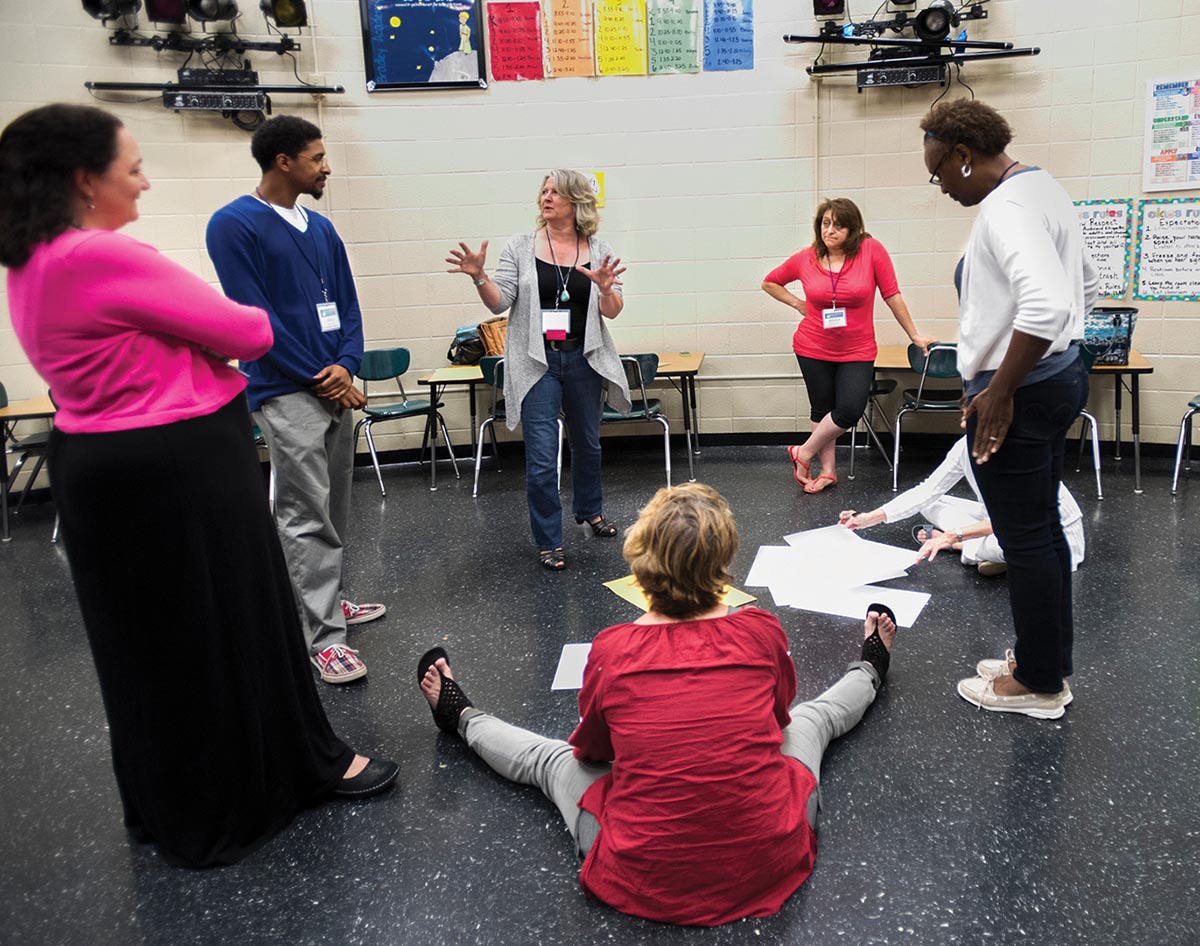Design Thinking in the Classroom

By Ann Talbott Brown, Director of Arts Education
This article originally appeared in the May 2018 issue of Nashville Arts Magazine.
The 2018 Tennessee Arts & Arts Education Conference will be held on June 19–21 at Austin Peay State University (APSU) in partnership with the Center of Excellence for the Creative Arts (CECA). This gathering is geared toward arts administrators and teachers interested in learning best practices, lesson plan ideas, and the nuts and bolts of work in arts management and education. This year’s theme is Design Thinking: A Pathway to Innovation in the Arts, and all attendees will explore a process used by designers to develop a new product or come up with an innovative solution to a problem
Most versions of the Design Thinking process encompass the following steps.
1. Empathize
2. Define
3. Ideate
4. Prototype
5. Test
Design Thinking involves building empathy to understand the need or issue clearly; defining the problem or driving question; brainstorming ideas to address the problem or question; improving or coming up with new ideas based on feedback about initial ideas; designing a prototype that is tangible, digital, or actionable; testing the prototype to determine what works and what needs to be fixed; and repeating steps of the process until a final product or idea is ready to implement.
This process is valuable for educators because it develops 21st-century learning skills such as creativity, collaboration, communication, and problem solving and soft skills such as interpersonal (empathetic), flexibility, and teamwork. Design Thinking encourages students to embrace a maker-mindset, consider unlikely solutions, and persevere until a final solution is determined. What’s fascinating is Design Thinking challenges a fixed mindset and builds a growth mindset—a mindset both students and teachers alike should embrace.
In addition to tailored training in Design Thinking, select sessions offered for general classroom teachers and arts teachers include:
• Laying a Foundation: Defining Arts Integration and Experience an Arts Integrated Learning Unit, Parts I-II by Dr. Janice Crews, Director of CECA
• Train the Trainer. Think Like a Designer: A Session for Educators presented by Mary Kim, Director of Bridge Innovate’s Bright Spark, which is a social impact initiative to ignite creative confidence within students and educators
• Unpacking the New Tennessee Fine Arts Standards by Dr. Brad Foust and Amanda Galbraith, members of the Standards Writing and Review Committee
• Visual Arts in Elementary Music by Dr. Eric Branscome, Department Chair and Coordinator of Music Education at APSU
Participants engage with arts education sessions during the 2016 Collective Impact: TN Arts and Arts Education Conference; Photographs by State Photography Services
Most conference sessions will take place at APSU’s new Art + Design Building, a space conducive to exploration and inspiration. The conference offers in-service hours and is approved to award Continuing Education Units (CEUs) for teachers through APSU’s Continuing Education Program.
For more information or to register, visitwww.tnartscommission.org/2018-statewide-arts-conference/.
See you there!


